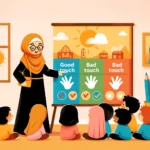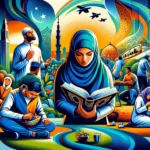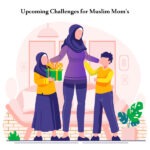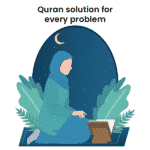Muslim youths in the USA, like many minority communities, face challenges shaped by a complex interplay of religious, racial, and sociopolitical factors. The following are five major challenges that Muslim youths in the USA might face:
Islamophobia and Discrimination:
Challenge:
In the aftermath of the 9/11 attacks and other incidents linked to extremist groups, there has been a marked increase in Islamophobic sentiments in the USA. Misconceptions and misunderstandings about Islam have fostered an environment where Muslims often face discrimination, bias, verbal abuse, and at times, physical violence. These prejudices are not solely based on religious beliefs but are also intertwined with racial and ethnic biases, as many Muslims in the USA are also from diverse racial and ethnic backgrounds.
Solutions:
-
Public Education Campaigns:
Launch campaigns that aim to educate the general public about the basic tenets of Islam, emphasizing the religion’s teachings on peace, unity, and community welfare. These campaigns can use various mediums like television, radio, social media, and community events. Reducing ignorance about Islam can help dispel prevalent myths and stereotypes.
-
Interfaith Dialogues:
Organize interfaith dialogues at muslim youth center, schools, and places of worship. These dialogues would bring together people of various faiths to share, learn, and find common ground. By fostering conversations between different religious groups, mutual understanding can be achieved, leading to a reduction in biases and misconceptions.
-
Anti-Discrimination Policies and Legislation:
Push for stronger laws and regulations that protect individuals from discrimination based on religion, race, or ethnicity. Implement policies in workplaces, schools, and public spaces that ensure fair treatment for everyone, regardless of their religious beliefs. Such policies can provide legal recourse for those facing discrimination and act as a deterrent against potential discriminative actions.
-
Support and Counseling Services:
Establish helplines and support centers where victims of Islamophobia can report incidents, seek counseling, and get legal advice. These services can offer immediate assistance to victims, making them feel supported and less isolated.
-
Community Outreach Programs:
Encourage Muslim communities to hold open-house events, community iftars (breaking of fast during Ramadan), and other public events that allow non-Muslims to experience Muslim traditions and culture firsthand. Direct interaction with Muslim communities can challenge prejudices and foster unity.
Identity Crisis and Cultural Integration:
Challenge:
For Muslim youths in the USA, balancing their cultural and religious identity with the broader American culture can be a daunting task. They often find themselves at a crossroads, trying to navigate the expectations of their family and community while also wanting to fit into the wider American society.
This duality can result in an identity crisis where they feel they don’t completely belong to either group. The pressure to assimilate can sometimes conflict with maintaining cultural and religious practices, leading to feelings of alienation and confusion.
Solutions:
- Implement programs in schools and communities that celebrate cultural diversity. By promoting understanding and acceptance, these programs can help Muslim youths feel valued for their unique backgrounds while also feeling a part of the larger community.
- Establish mentorship initiatives where older individuals who have successfully navigated cultural integration can guide and advise younger generations.
- Schools can develop curriculums that incorporate diverse cultural histories and contributions, including those of Muslim civilizations and scholars. Such education can foster mutual respect and reduce misconceptions, helping Muslim students feel seen and understood in academic settings.
- Create environments in schools, colleges, and communities where youths can openly discuss their feelings and experiences related to their identities. Open dialogues can help individuals process their feelings, find support, and come up with solutions to the challenges they face.
- Encourage programs that allow youths to spend time in predominantly Muslim countries or areas with different cultural norms. This can be in the form of student exchange programs or cultural immersion trips. Direct exposure to different cultures can help Muslim youths better understand and appreciate their own heritage, while also sharing their American experiences abroad.
- Encourage community events that celebrate diverse cultures, including festivals, food fairs, and art exhibitions. This would allow communities to come together and appreciate the richness of each other’s traditions. Such initiatives can foster community cohesion and make Muslim youths feel proud of their cultural contributions.
Peer Pressure and Misunderstandings:
Challenge:
Muslim youths in the USA, as with many young individuals in minority communities, often face a myriad of peer pressures. These pressures can relate to societal norms, behaviors, and expectations that might conflict with their religious or cultural beliefs.
For instance, the consumption of alcohol, dating practices, or even dietary choices can become points of contention. Misunderstandings about these beliefs and practices can lead to feelings of exclusion or the need to conform, even if it goes against their personal or familial beliefs.
Solution:
To address the challenges of peer pressure and misunderstandings faced by Muslim youths, it’s essential to foster an environment of education and open dialogue both within and outside educational settings. Schools and community centers can host workshops and sessions that educate youths about diverse cultures and religions, encouraging mutual respect and understanding.
Peer mentoring programs can be introduced, where students support each other in navigating social challenges, promoting a culture of empathy. Additionally, creating platforms where Muslim youths can share their experiences and clarify misconceptions can diminish misunderstandings and reduce the negative impacts of peer pressure.
Limited Representation in Media and Popular Culture:
Challenge:
The underrepresentation or misrepresentation of Muslims in media and popular culture often leads to a skewed understanding of the community. Stereotypical portrayals can reinforce negative biases, preventing the broader audience from seeing the diverse and multifaceted nature of Muslim communities.
This lack of accurate representation not only fuels misconceptions but also affects the self-perception of Muslim youths, making them feel unseen or undervalued in the society they live in.
Solutions:
- Encourage Diverse Storytelling: Production houses, film studios, and media outlets should be encouraged to include stories that capture the diverse experiences of Muslims. By showcasing narratives from different backgrounds and perspectives, the media can offer a more accurate representation of the Muslim community.
- Promote Muslim Talent: Actively seek out and promote Muslim actors, writers, directors, and producers in the entertainment industry. Their presence can provide genuine insights and authentic portrayals of Muslim characters and narratives.
- Educational Campaigns for Media Professionals: Organize workshops and seminars for media professionals, educating them about the importance of accurate representation and the potential harm of perpetuating stereotypes.
- Audience Advocacy: Encourage audiences to demand better representation by supporting media that portrays Muslims in a positive and diverse light. Public demand can significantly influence media production decisions.
- Collaborations with Muslim Organizations: Media outlets and production houses can collaborate with Muslim organizations and consultants to ensure the accurate portrayal of Islamic practices, traditions, and cultures.
- Recognition and Awards: Establish awards or recognitions for media productions that exemplify accurate and positive representation of Muslims and other minority groups, thereby incentivizing quality portrayals.
Balancing Religious Observations with Daily Life:
Challenge:
Muslim youths in the USA often grapple with integrating their religious practices into their daily lives, especially in environments that may not be familiar with or accommodating of these practices. Daily religious observations, such as the five daily prayers, fasting during the month of Ramadan, or wearing the hijab, can sometimes intersect with school, work, or social activities, leading to challenges in balancing both.
Solutions:
To effectively help Muslim youths balance their religious observations with daily life, it’s crucial to foster an atmosphere of understanding and flexibility. Educational institutions and workplaces can make provisions for prayer breaks or spaces dedicated to prayer. During Ramadan, adjustments can be made for students and employees who are fasting, such as scheduling important tasks or tests outside the fasting hours.
Awareness campaigns can help in educating the larger community about Islamic practices, fostering understanding and reducing potential misconceptions or biases. Furthermore, encouraging Muslim youths to engage in open dialogue about their needs and practices allows for a more inclusive environment. By creating spaces where religious practices are acknowledged and respected, Muslim youths can seamlessly integrate their faith into daily life without feeling marginalized.
Conclusion
The challenges faced by Muslim youths in the USA are deeply interwoven and reflective of a broader societal need for understanding and inclusion. These challenges, while distinct, share a common thread: the desire for Muslim youths to be seen, understood, and valued in a society that is diverse and multifaceted.
To the resilient Muslim community: Your rich tapestry of traditions, values, and beliefs enriches the fabric of the American mosaic. In the face of challenges, remember that your collective strength, unity, and wisdom have always been the guiding lights for younger generations. Continue to engage, educate, and bridge gaps with compassion and grace. Support your youth, for they are the bearers of both your legacy and the promise of a harmonious future.
The path to mutual respect and understanding is paved with dialogue, patience, and perseverance. Remain steadfast in your faith and convictions, and together, as a united community, you can inspire change and cultivate a society where every individual is celebrated for their unique contributions.

















